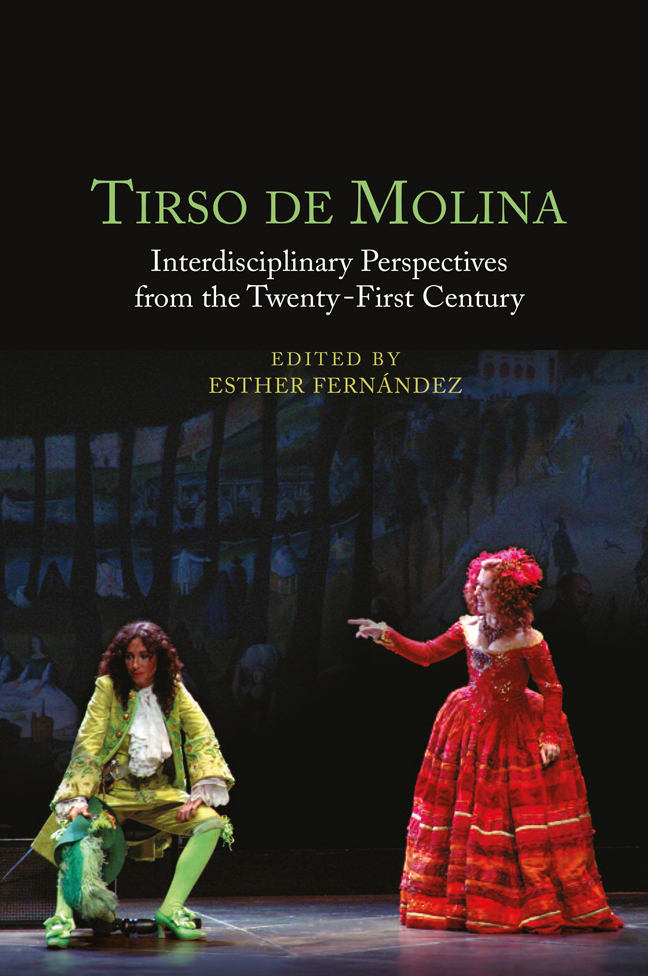10 - Tirso de Molina: A Musical Meeting of the Minds
Published online by Cambridge University Press: 02 March 2024
Summary
Jonathan Thacker rightly emphasizes, “All of the major dramatists of the Golden Age understood the importance of music as an element of drama” (2007: 139). Early modern dramatists intertwined music and theater to such an extent that musical performances in theatrical productions were deemed essential (Flórez 2006: 13). Early modern Spanish playwrights intercalated songs in their dramas in numerous ways, demonstrating a variety of functions. They did not merely use musical interventions in their works as an ornament or an accessory, but as tools to intensify and strengthen the poetic text in terms of atmosphere, characterization, mood, plot, and theme. Songs served to punctuate and unify the dramatic action, by announcing, closing, introducing, marking, and narrating the plot and the scenes within (136–144). They foreshadowed upcoming events and offered commentary on the dramatic action or the theme. Musical interventions provided additional insight about certain characters, including their motivations and relationships. Other songs demonstrated an ideological purpose, exalting a political or religious power or expressing the perspective of a certain group. In some instances, they symbolized a universal concept or served as the voice of destiny, conscience, or a divine power (167–169).
Scholars agree that Lope de Vega cultivated and normalized the use of music in the comedia. In Arte nuevo de hacer comedias en este tiempo [New Art of Writing Plays in This Time], Lope explains that the comedia nueva “consists of three things, which are: dialogue, | sweet verse, harmony, or rather music” (1776: 55–56). According to Louise Stein, as the vehicle for verso dulce (sweet verse) and armonía (harmony), music became indispensable to the aesthetic and affective goal of the genre (1993: 14): the imitation of early modern life. Ann Livermore notes that he fully integrated songs and dances into many of his plays, in their entirety or in fragments, to enrich the dramatic action (1944: 146). Like Spanish composers of the time, Lope relied on the familiar and incorporated well-known musical texts from the popular tradition. By connecting the stage and real life, he engaged the audience in the action through customs and conventions of Spanish popular culture.
- Type
- Chapter
- Information
- Tirso de MolinaInterdisciplinary Perspectives from the Twenty-First Century, pp. 147 - 159Publisher: Boydell & BrewerPrint publication year: 2023

